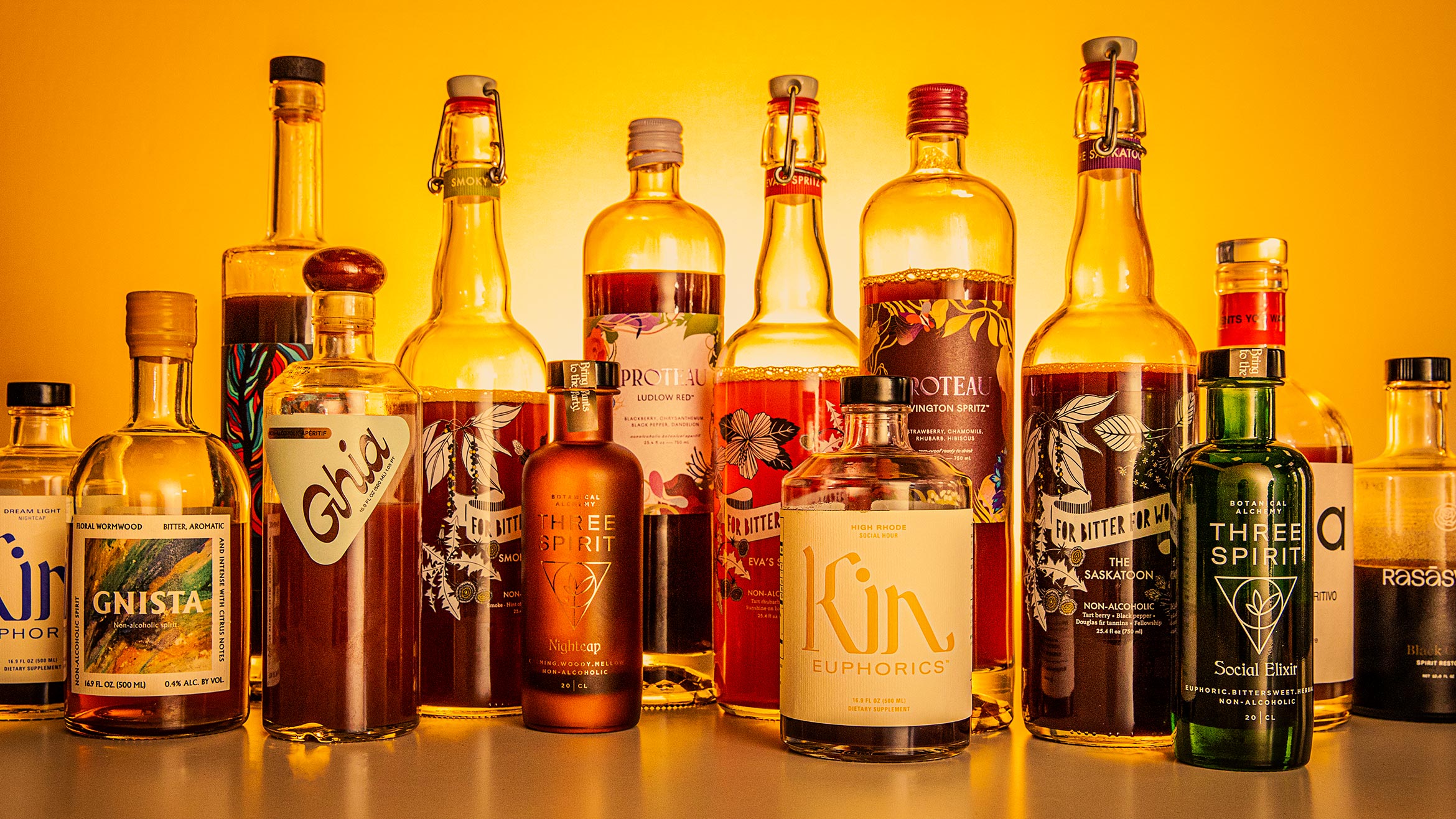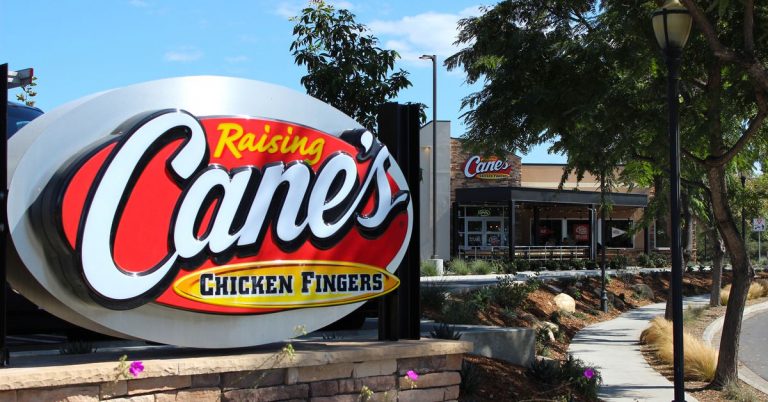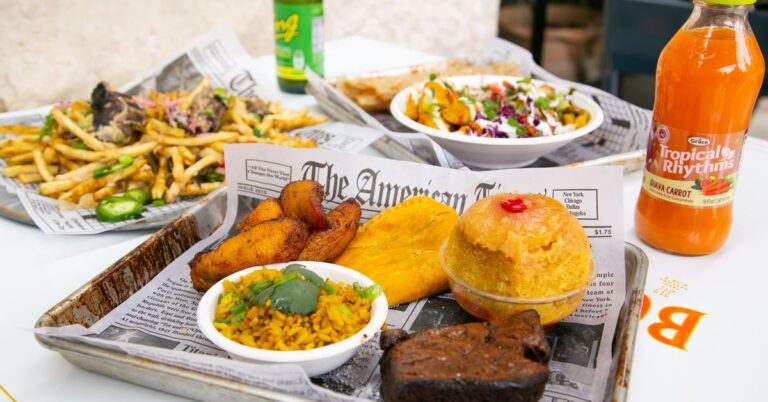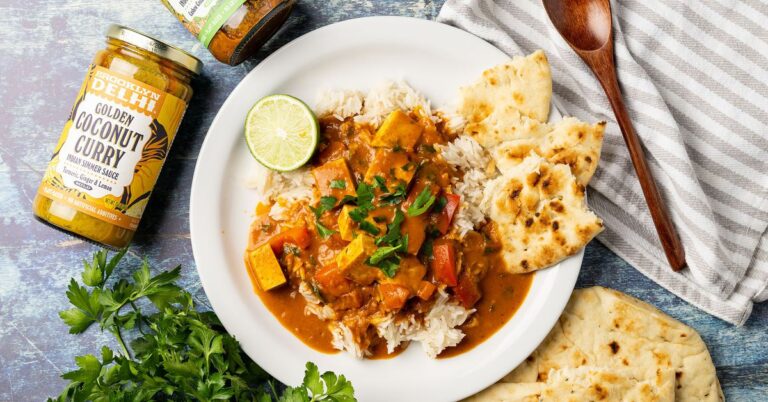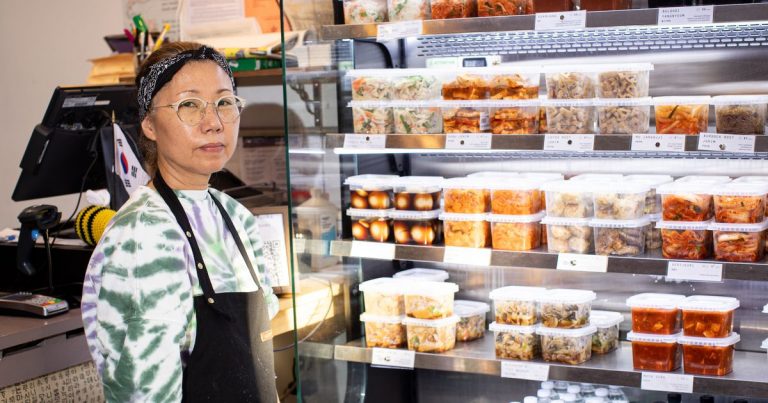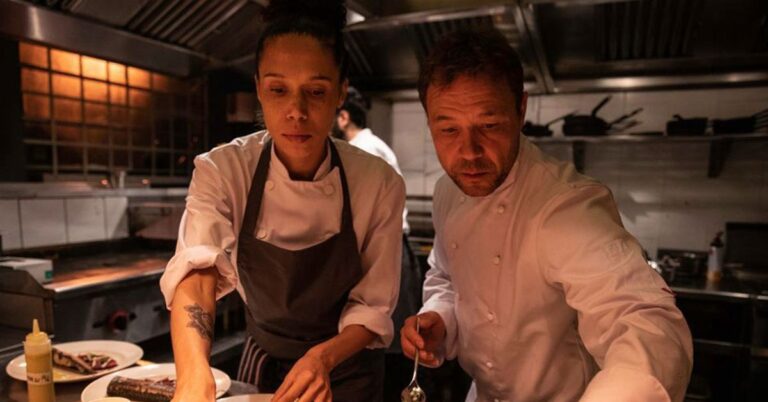With Nonalcoholic Drinks, Wellness Has Come for Aperitivo
Several bottles into a team tasting of more than 20 no-ABV beverages, each more slickly packaged than the last, we wondered whether we had hit Peak Aperitivo. Though not every bottle labeled itself as such, the brands’ messaging around simplicity, the daily vibe shift from work to leisure time and an obvious affinity for the spritz made clear that they endeavored to wedge themselves into our growing fondness for the Italian rite.
The N/A drink setting its sights on aperitivo makes sense. It’s a tradition centered around ritual and gathering—qualities that those abstaining from alcohol might miss most—and drinks built for sessionability. Plus, the lore of the aperitivo hour, an elevated happy hour, is enticing. And yet each of the beverages we tasted had little in common with traditional aperitivi—the bitter, low-alcohol drinks whose herbal profiles are meant to stimulate the appetite—and even less with one another. In contrast to the vibrant, translucent ingredients typical of golden-hour drinking, many of the products we tasted were murky, viscous and brown. And unlike Lyre’s nonalcoholic Campari alternative or Giffard’s aperitif syrup, bright red products that are designed explicitly for swapping into classic aperitivo drinks, these bottles rarely displayed the bittersweet flavors one might expect from an aperitif. And, some beverages’ use of nootropics, adaptogens and the word “elixir” tugged the products further in the direction of wellness culture.
In short, each seemed eager to both join an established drinking category and simultaneously disrupt it, leaving us with one central question: What exactly are we drinking?
Douglas Watters, of the zero-proof spirits store Spirited Away, suggests a new term for some of the drinks we tried: functional spirits. “In my mind, an aperitif is to be consumed before dinner to stimulate the appetite,” he says. “Functional spirits” such as Kin and Three Spirit, he notes, are instead “intended to be consumed before the party, to enliven the mood, simulate spirits, etc.” The focus on special occasions might better justify the cost, as many of these bottles (which averaged around $30 to $50 per bottle) would make for an expensive daily ritual. Price considered, it’s impossible to ignore that a cheaper and more prototypical alternative exists. The nonalcoholic bitter Italian soda has been around for more than half a century, and a 24-pack of 100ml Stappi bottles, by contrast, will run you $30.
The direct-to-consumer (DTC) model that most of these brands adhere to means that there isn’t a consumption reference point in the wild, further amplifying confusion about how they should be served. (Not everyone has a nearby store, like Spirited Away, equipped to answer questions.) “Right now, a lot of the advertising is focused on Instagram ads,” says Kayleigh Blome, who heads the nonalcoholic cocktail program at Seattle’s Stampede Cocktail Club. Once the beverages arrive, their packaging often paints a picture of when the drink should be enjoyed—during “deep conversations of truth and connection,” according to Kin; to become “the life and soul of the party,” according to Three Spirit—with comparatively less guidance around how best to enjoy the liquid itself. While some brands provided cocktail recipes, all suggested they could be sipped neat. But out of the more than 20 offerings sampled for this story, few stood out in that format.
Mixing them into a cocktail (N/A or otherwise) can indeed unlock their potential. At Bar Beau in Brooklyn, for example, bartenders found Ghia best presented in a shaken, citrusy drink paired with hot pepper honey—the spice slows drinking, replicating the pace of sipping alcohol. Yet bartenders we surveyed discussed issues with cost (at the LUNAR inn in Philadelphia, Ghia’s $33 bottle was swapped for a $20 zero-proof aperitif to maintain affordable N/A cocktail prices), shelf life and a general consensus that they are challenging to mix with. Blome, who has extensive experience with N/A drinks, does utilize zero-proof aperitifs, but they have had most success with the aforementioned Giffard syrup “because it is more of a simple component that allows me to make my own complexity around it.” A challenge for DTC aperitif consumers, according to Blome, is the misconception that you can easily swap the beverages into existing cocktail recipes. “You cannot plug in nonalcoholic ingredients into tried-and-true cocktail recipes and expect a fulfilling drink,” they say.
Ultimately, “any of these things on their own, it’s like fake meat. It’s not the same,” says Emily Kovach, who stocks nonalcoholic aperitifs in her Tinys Bottle Shop in Philadelphia and on the backbar at the adjacent LUNAR Inn. “But, in a sandwich, we can roll with it.” Likewise, in our tasting, undiluted, overbearing flavors such as menthol, prune, beet, clove and cardamom, not to mention a fair amount of tannin, did not leave us wanting more. The bottles that we enjoyed, instead, were spritzes: Eva’s Spritz by For Bitter For Worse (a brand which also explicitly avoids making healing or medicinal claims) had a pleasing effervescence and botanical profile, while Ghia’s Le Spritz felt balanced, with a clean finish. Trying the beverages again, but mixed with soda water, Three Spirit’s Livener, with its earthy flavor and spicy finish, was also favored.
The rest of the bunch cast more confusion over what the beverages really are: Herbal elixirs? Mindful pre-game drinks? Like the canned CBD cocktails and “clean” wines growing in popularity alongside them, the not-quite-aperitifs of the wellness world have yet to successfully justify what they are and who they are for. Categorizing them as their own thing—perhaps “adult drinks,” as Watters describes his zero-proof offerings, or “spiritfrees,” as bartender Julia Momosé declares in her manifesto about N/A cocktails—might help. For now, though, the wellness industry’s grasp on drinking, nonalcoholic or not, has made aperitivo, a ritual defined by its simplicity, anything but.
